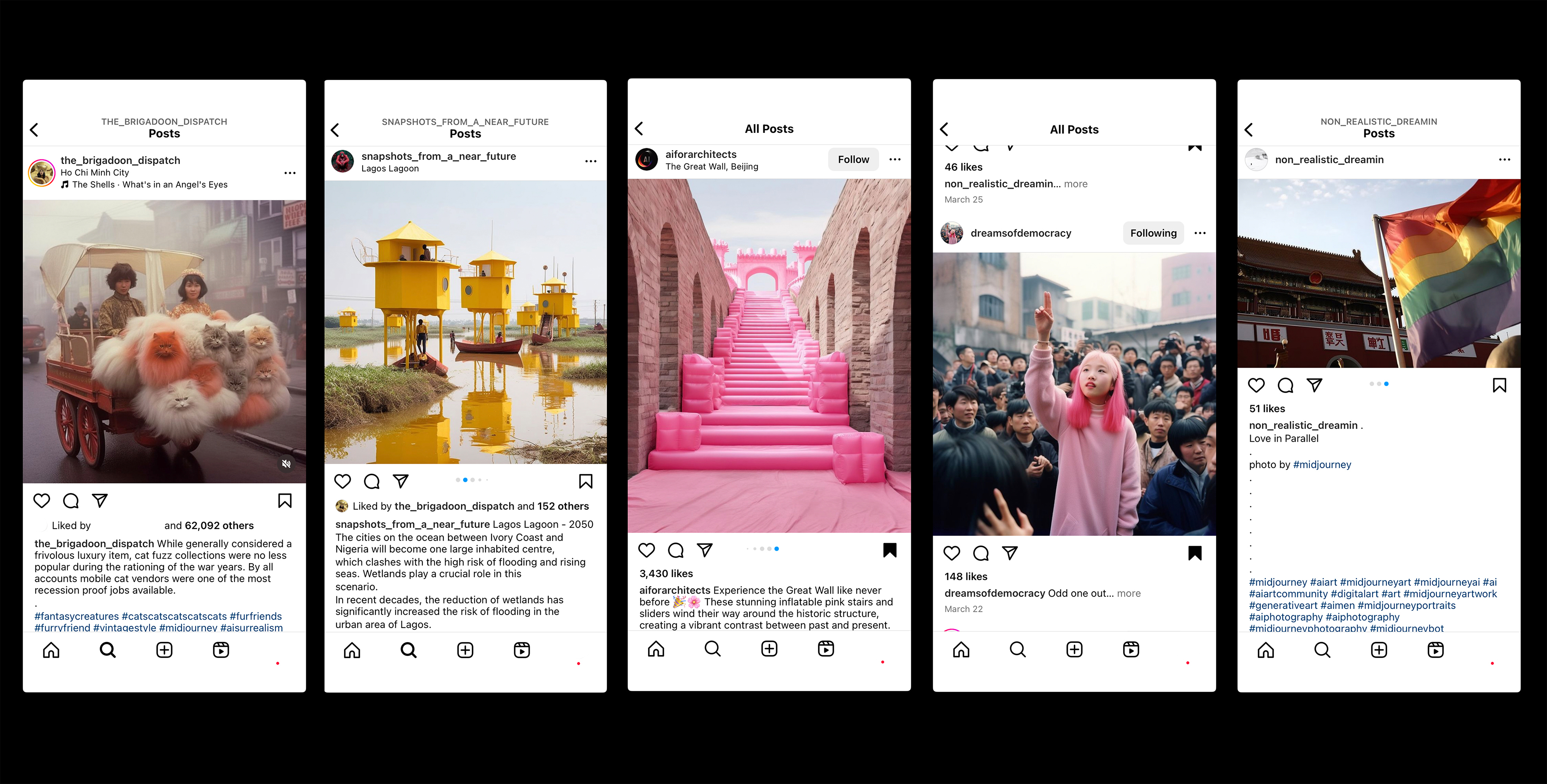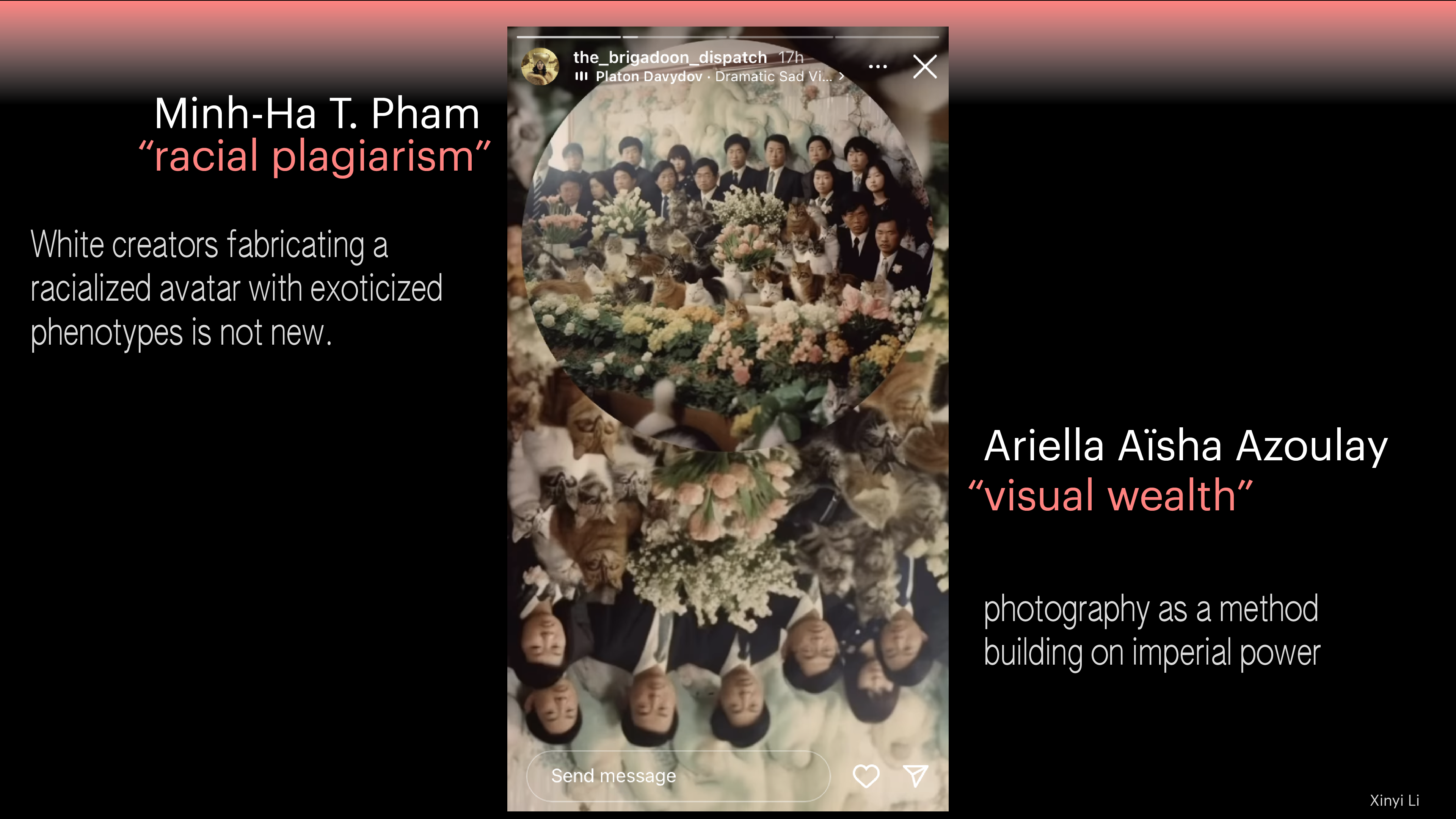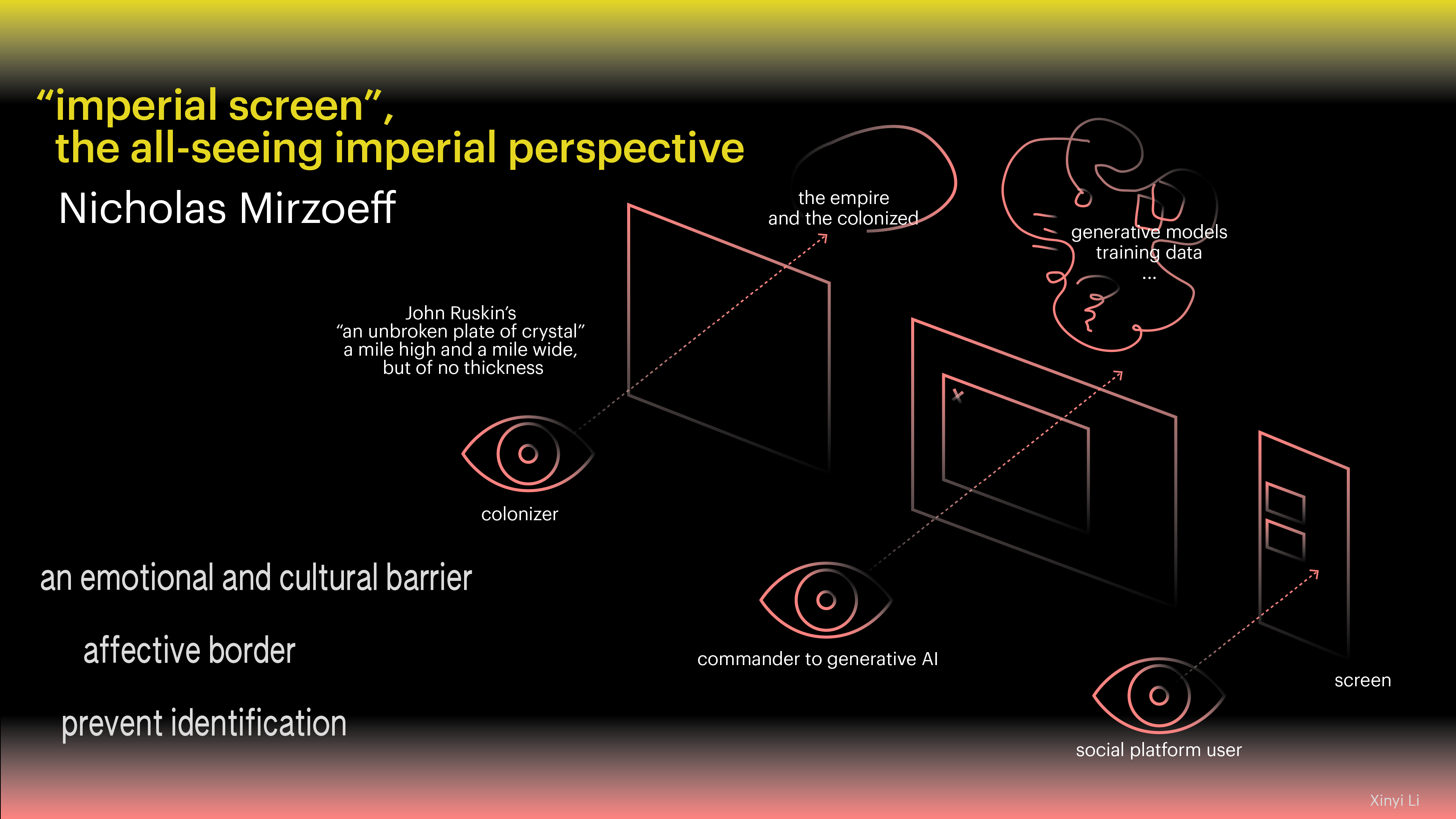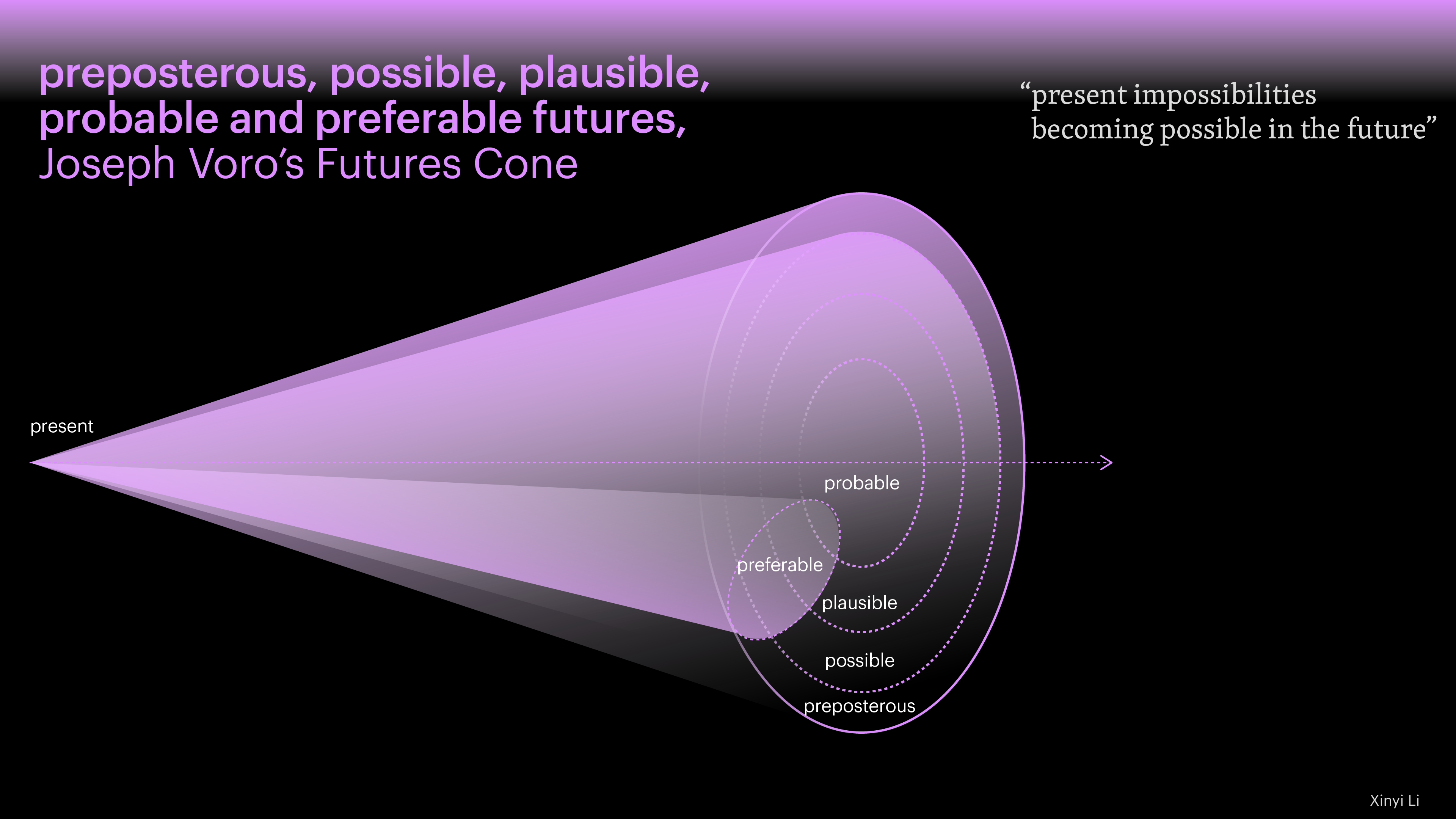Reading AI-generated Speculative Futures in a Digital Visual Age




By reading three types of AI-generated projects as speculative design, this study shifts the focus from the generative model itself to the production and reception of the images.
AI-generated images are often praised for their mere existence, their aesthetic, and technical processes. Overshadowed by concerns of copyright and algorithmic bias, they tend to evade scrutiny regarding the underlying concept and human interventions. Existing literature within art and design fields often places AI as either the central subject or a tool serving creative goals. This paper approaches cases from three categories of speculative futures with varying degrees of plausibility that circulate on Instagram, a popular platform among AI content creators that has evolved from a persona-driven to a curation-driven one.
I compare the intention of transparent or anonymous authorship, and the affective engagement they evoke, and ethical implications of generating a racial other(@the_brigadoon_dispatch). I examine their relationship with reality, and how they concern past, present, and future. I question whether speculative design, amid ongoing criticisms, is at an “image turn”, flattening literary imagination to visual stimuli for consumption, furthering the ocular-centrism of contemporary media cultures, and aestheticizing the sufferings of the remote other(@snapshots_from_a_near_future).
I exemplify image anarchism with how the Great Wall covered by soft and pink inflatables by @aiforarchitects gained radical meanings through reposts on dissident pages. While narratives are not explicit, symbols of patriarchal power and mandate nationalism clashed with imaginative interpretation and connected to sites of history and precedent artistic creations as soft resistance. When the alternative worlds are by no means journalistic but still sensitive to times and responsive to reality, the images forge discourse and deep affective connections.
I conclude by connecting to mnemonic imagination’s synthesis of imagining and remembering, speculating how fiction can be used as a method to connect to others’ pasts to seed reciprocal future actions, while letting meaning to emerge through image anarchist circulation, and allowing space for imagination stemming from the tension of reality and fiction.
Li, Xinyi. “Reading AI-generated Speculative Futures in a Digital Visual Age” in Amanda Wasielewski (Chair), Panel “Ekphrasis and Artificial Intelligence: Text-to-Image Generation in Theory and Practice.” Paper presented at the College Art Association (CAA) Annual Conference, Chicago and Online, February 17, 2024.